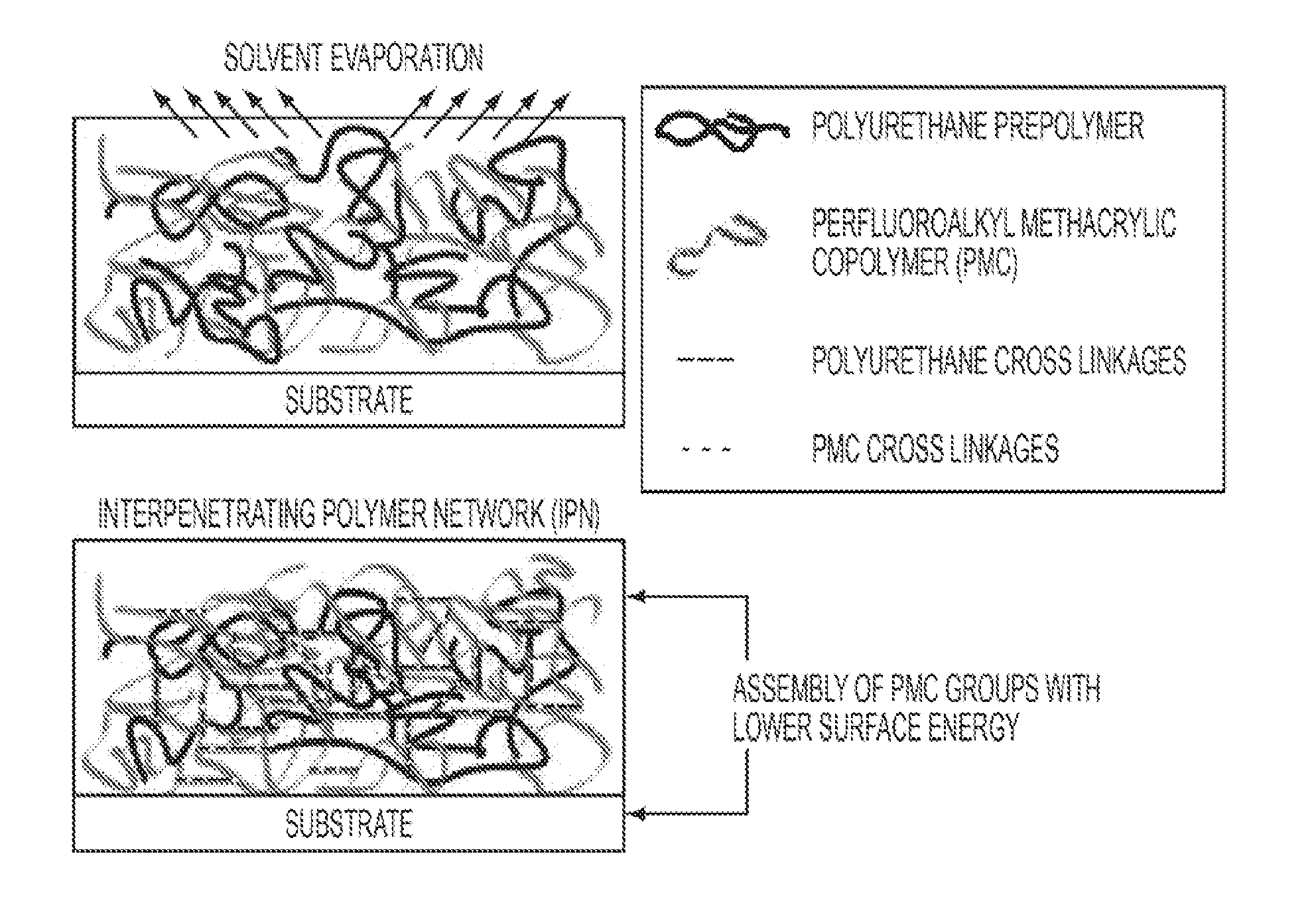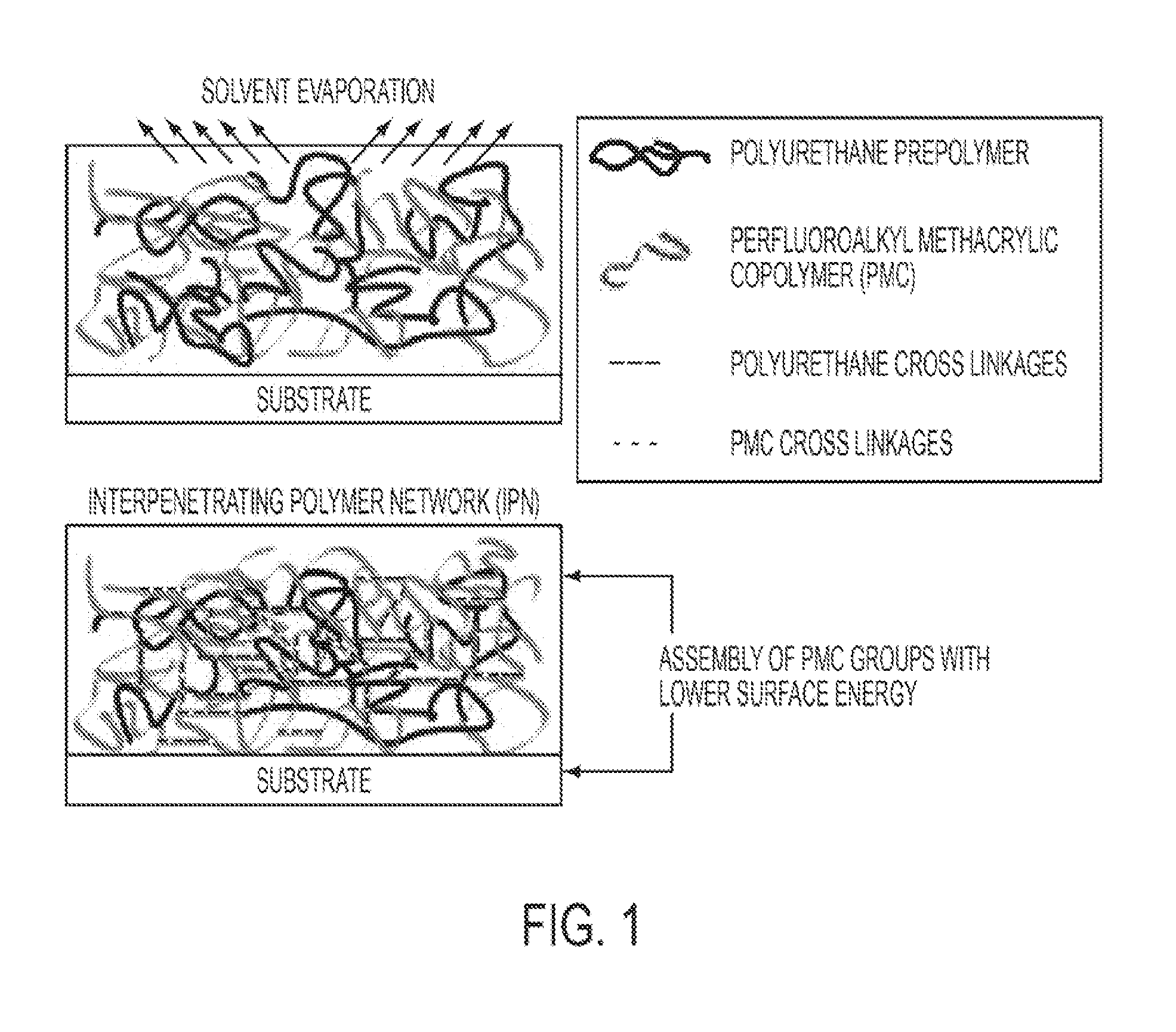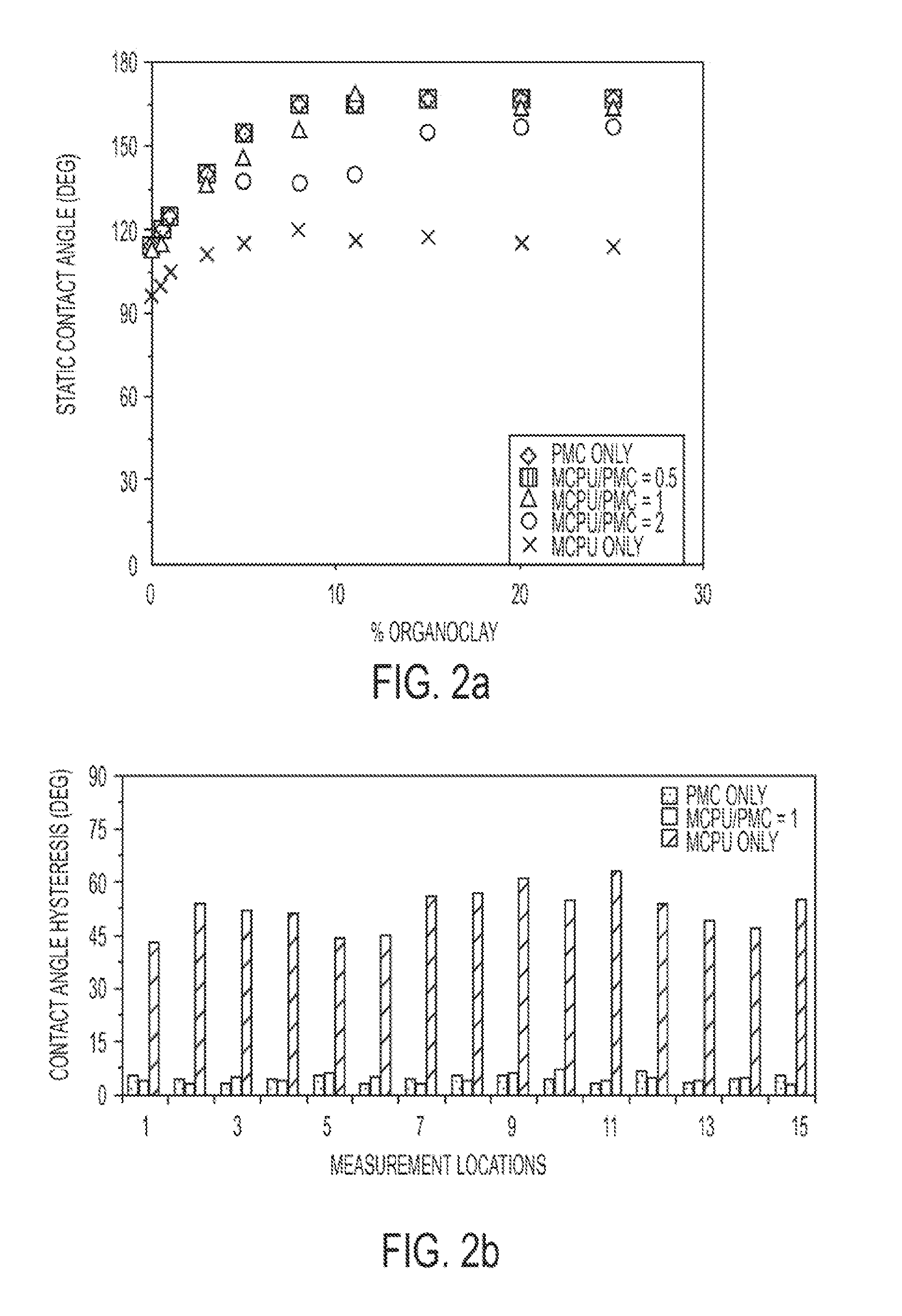Superhydrophobic nanocomposite coatings
- Summary
- Abstract
- Description
- Claims
- Application Information
AI Technical Summary
Benefits of technology
Problems solved by technology
Method used
Image
Examples
example 1
Superhydrophobic Nanocomposite Coatings of the Invention
[0071]1.1 Preparation of Coating Composition
[0072]Nanoclay particles, dimethyl dialkyl C14-C18 amine-functionalized montmorillonite clay particles, (available from Nanocor Inc., USA) was first dispersed in ethyl alcohol at room temperature. The PMC was added slowly to the nanoclay dispersion and blended with vortex mixing. All dispersions were carried out with vortex mixing (standard heavy duty model, Fisher Scinetific) for 5 minutes unless otherwise specified. Separately, the MCPU was also dispersed in ethyl alcohol. The nanoclaynanoclay / PMC dispersion was blended into the MCPU dispersion and vortex mixed, creating a Pickering emulsion. Finally, the PMC suspension was added slowly to the solution and dispersed. The final emulsion was stirred using a vortex mixer for 15 min until the mixture was in a homogenous and stable state. The amount of each component in the coating compositions is shown in Table 1.
TABLE 1MCPU / PMC (30 wt ...
example 2
Temperature and Humidity Effects on Superhydrophobicity of the Nanocomposite Coatings of the Invention
[0088]2.1 Measurement of Static Water Contact Angle (CA) and Roll-off Angles (ROA)
[0089]This example systematically measure the static water contact angle (CA) and the roll-off angle (ROA) of a superhydrophobic polyurethane / nanoclay nanocomposite surface for a full temperature cycle from 20° C. to −3° C. and back to 20° C. at both low and high humidity conditions while maintaining homogeneous thermal conditions (equal air, nanocomposite surface and water temperatures) at each point of measurement (every 5° C.) within the specified temperature cycle. The nanocomposite coatings were created as described in Example 1. Coating composition 3 was used. The coating compositions were then spray-casted onto aluminum substrates using an internal mix, double-action airbrush atomizer (model VL-SET, Paasche). The substrates were coated with a single spray application from a distance of approxima...
example 3
Impact of Spray-Casting Height and Pressure
[0098]3.1 Nanocomposite Coating Fabrication
[0099]Precursor solutions were first created, followed by spray casting and then thermosetting to produce the final nanocomposite coatings as described in Example 1 with the following differences. First, polyurethane was dispersed in acetone. The polyurethane was Imron AF3500 product, a polyester-aliphatic / isocyanate polyurethane available from DuPont. Next, as-received dimethyl dialkyl C14-C18 amine functionalized montmorillonite clay particles (Nanoclay, Nanocor Inc., USA) were dispersed in the polyurethane-acetone mixture. Finally, waterborne fluorinated acrylic copolymer (25% wt polymer, 75% wt water; Dupont) was added slowly to the polyurethane-nanoclay suspension and blended with vortex mixing for 15 minutes, creating a Pickering emulsion. To further promote homogeneity in the solution, the slurry was sonicated at 35% amplitude at a frequency of 20 khz for two minutes with an ultrasonicator (...
PUM
| Property | Measurement | Unit |
|---|---|---|
| Length | aaaaa | aaaaa |
| Percent by mass | aaaaa | aaaaa |
| Percent by mass | aaaaa | aaaaa |
Abstract
Description
Claims
Application Information
 Login to View More
Login to View More - R&D
- Intellectual Property
- Life Sciences
- Materials
- Tech Scout
- Unparalleled Data Quality
- Higher Quality Content
- 60% Fewer Hallucinations
Browse by: Latest US Patents, China's latest patents, Technical Efficacy Thesaurus, Application Domain, Technology Topic, Popular Technical Reports.
© 2025 PatSnap. All rights reserved.Legal|Privacy policy|Modern Slavery Act Transparency Statement|Sitemap|About US| Contact US: help@patsnap.com



